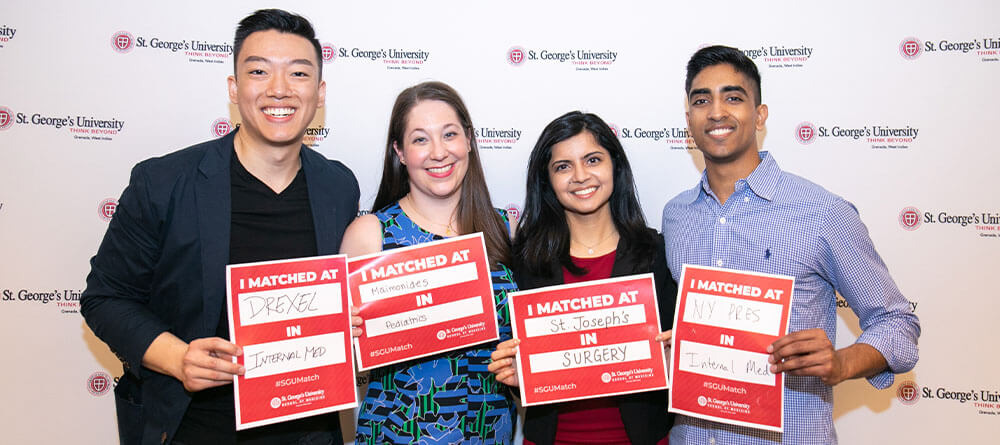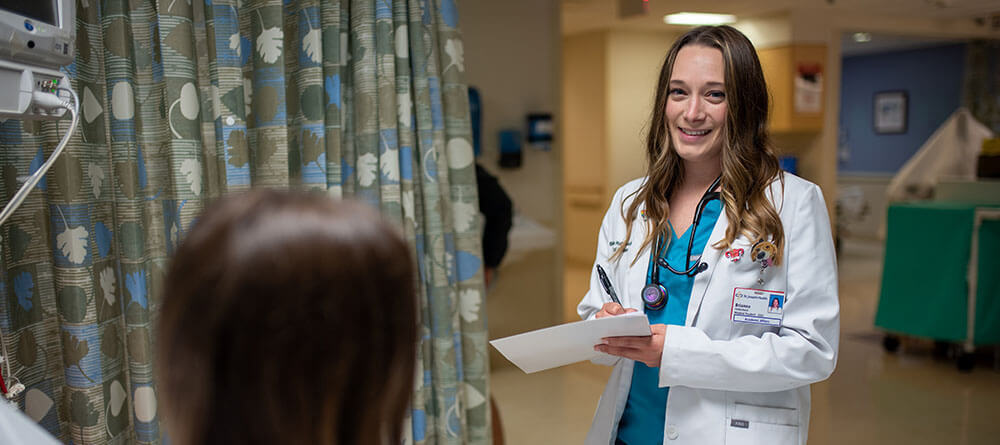It’s a big decision to attend medical school. You’ve carefully worked your way through applications and compared programs to make some important decisions about which ones would best meet your needs. There’s just one more thing you’re contemplating: the cost.
If you’re considering the School of Medicine at St. George’s University (SGU), it’s helpful to know that tuition and fees run about $34,100–$37,700 per term.1 Before you commit to earning your Doctor of Medicine (MD) degree at SGU, you’ll want to know what you’re paying for.
To help you make an informed decision, we’re digging into the details to provide you with a fuller picture of what you can expect from the cost of St. George’s University tuition.
6 Facts to keep in mind when evaluating the cost of SGU tuition
Schools vary substantially when it comes to tuition and fees, so it’s worth taking a bit of extra time to do some research. With so many different factors at play, it makes sense to have some lingering questions.
Consider the following information when assessing the cost of medical school at St. George’s University:

1. SGU guides students toward residency from the beginning
When it comes to graduate outcomes, SGU has a longstanding track record of success. Over the past three years, SGU students have a 93 percent US residency placement rate.2 And during that same timeframe, 94 percent of SGU students taking the United States Medical Licensing Examination (USMLE) Step 1 for the first time achieved a passing score.3
One of the keys to SGU’s success is the institution’s commitment to helping guide students toward residency, even when they’re still near the beginning of their medical education.
The Office of Career Guidance and Student Development (OCGSD) begins working with MD students as early as year two of their medical training; however, this residency focus intensifies during years three and four. The office is composed of SGU graduates and other support staff who are available to assist students in writing their CVs, gearing up for interviews, and completing additional tasks related to residency preparation.
Students can also choose to utilize SGU’s Residency Advisor software program. It helps them choose appropriate hospitals in the Match, offering yet another layer of guidance.
2. The facilities are modern and help prepare you for exams, residency, and beyond
SGU provides students with a dynamic medical education, with contemporary facilities that offer innovative training opportunities. The campus includes lecture halls, labs, libraries, research facilities, and more—all fully equipped with the latest technology.
If you’re curious to see what these campus accommodations are like firsthand, SGU encourages prospective students to book a trip to experience it for themselves. The SeeSGU Program allows eligible individuals to receive reimbursement for their flight and a three-night hotel stay if they visit and ultimately enroll.4

3. Every student has a game plan for clinical rotations
While medical school is four years in total, half of that time is spent completing clinical rotations. SGU students gain this experience in affiliated hospitals and clinical centers located in the US and UK. SGU has a director of medical education, program directors, faculty, and support staff at each clinical-site affiliate to oversee our university-led clinical program. This ensures that our students’ clinical training is cohesive and consistent.
SGU students complete their clinical training at hospitals and centers with postgraduate programs that have been approved by the Accreditation Council for Graduate Medical Education (ACGME). These students are doing their rotations right alongside students attending US medical schools.
4. Academic support is built into the program
Medical school can seem like a sink-or-swim situation. You buy your books, attend classes, study as much as possible, and hope it’s enough to keep you on the path to success.
But that’s not how things are at St. George’s University. The institution is committed to helping MD students complete the medical program and head into residency with confidence.
The Department of Educational Services (DES) plays a huge part in that effort, offering hundreds of workshops every week. Whether you need to strengthen your time management skills or you’re looking for some additional assistance with a challenging course, the DES has systems in place that can help. This is just one example of the many student support services included in the SGU tuition.
5. SGU rewards many students with institutional scholarships
Medical school scholarships aren’t as plentiful as those for undergraduate college students. But there are some awards available through personal providers, organizations, and medical schools themselves.
SGU is no exception. In fact, with 16 different scholarships and grants available, the institution granted more than $84 million to incoming four-year MD students in the 2021–2022 academic year.5

6. Medical school is a long-term investment
The final thing to remember is that medical school is not something you’ll pay for by writing a few checks. The upfront cost might be steep, but it aligns with the commitment required to be a physician.
It’s also important to consider the fact that employment opportunities for doctors are numerous, with the impending physician shortage highlighting a particular need for primary care physicians.
Finally, there are a number of different options to consider to minimize medical school debt, such as consolidating or refinancing your loans, taking advantage of income-driven repayment plans when applicable, or participating in one of the numerous loan forgiveness programs available to physicians who opt to practice in designated health professional shortage areas.
Invest in your dream to become a physician
Obtaining an MD isn’t for the faint of heart. Medical school requires hard work, dedication, and a notable financial investment. While you may be tempted to make a decision based solely on cost, assigning a dollar value to each institution simply doesn’t account for everything you should be considering.
As you compare St. George’s University tuition with other schools’ expenses, be sure to maintain a critical eye. Do other programs provide the support and guidance you need to make your dream a reality?
For more information about what you can expect from an SGU education, check out our infographic “Is SGU Medical School Worth It?”
1Institutional data (as of July 2022).
2Average of 2020, 2021, 2022 residency placement rate. Residency placement rate is defined as the total number of students who obtained a US residency divided by the total number of students who applied to a US residency program in a given year as of May 2022.
3Average of 2019, 2020, 2021 scores. First-time pass rate is defined as the number of students passing USMLE Step 1 on their first attempt divided by the total number of students taking USMLE Step 1 for the first time. In order to be certified to take USMLE Step 1, students are required to pass all basic sciences courses.
4SeeSGU Program, some exclusions apply – see full details at www.sgu.edu/next-steps/see-sgu/.
5Institutional data (as of May 2022).
*This article has been updated from a previous version to include current facts and figures.

